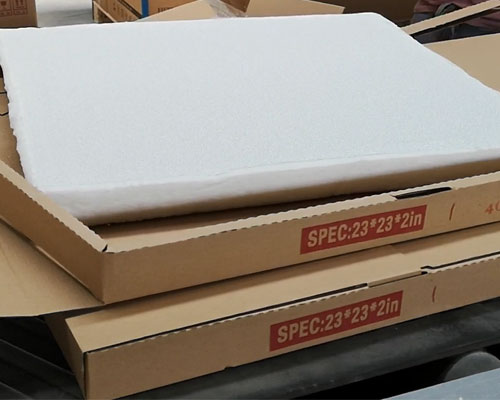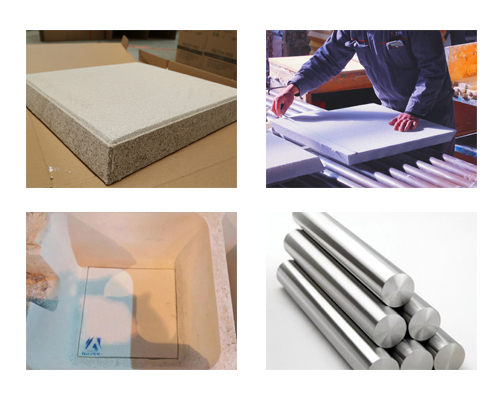Before the molten aluminum is solidified into an ingot or billet by filtration, it is best to remove the inclusions in the final processing step. Over the years, the aluminum foundry industry has used various technologies including bed filtration and ceramic foam filtration.
The open-cell ceramic foam filter used in aluminum foundries was developed in the early 1970s, and the technology was first commercially applied in 1974 to produce rolled ingots for the manufacture of plates and plates. Ceramic foam filters are integral, disposable or disposable filters used for single casting.
The filter pore size ranges from 4 to 28 holes per centimeter (10 to 70 holes per linear inch), and the corresponding pore size is approximately 0.036 to 0.26 cm. Ceramic foam filters usually produce square sizes from 22.86 cm × 22.86 cm × 5.08 cm (9 inches × 9 inches × 2 inches) to 66.04 cm × 66.04 cm × 5.08 cm (26 inches × 26 inches × 2 inches) for Installed in the fire-resistant filter box.

A fiber paper gasket is fixed on the edge of the filter plate to provide a transverse compressive load to fix the filter in the proper position in the filter bowl and prevent the metal around the edge of the filter from bypassing. The fibrous liner material is usually about 0.317 cm to 0.476 cm (1/8 to 3/16 inch) thick, and is usually composed of silicate fibers. Vermiculite is usually added to the gasket material, and it expands during heating to increase the gasket pressure.
In the 1980s, foundry ceramic foam filtration technology was quickly and widely accepted by the market and used for a wide range of high-quality aluminum products, including rigid packaging materials, lithographic printing plates, aerospace products, such as plates, plates, forgings and extrusions; bright decorations Surface decorations, condenser tubes, foils, construction extrusions, cast alloys and electrical conductor cables and wires.
The subsequent rapid market acceptance and the development of the technology in the aluminum field. Various types and complexity of casting rooms are due to the following reasons: ease of use and operator acceptance; operational flexibility; low operating and installation costs; effective removal of inclusions ; Small footprint requirements.

